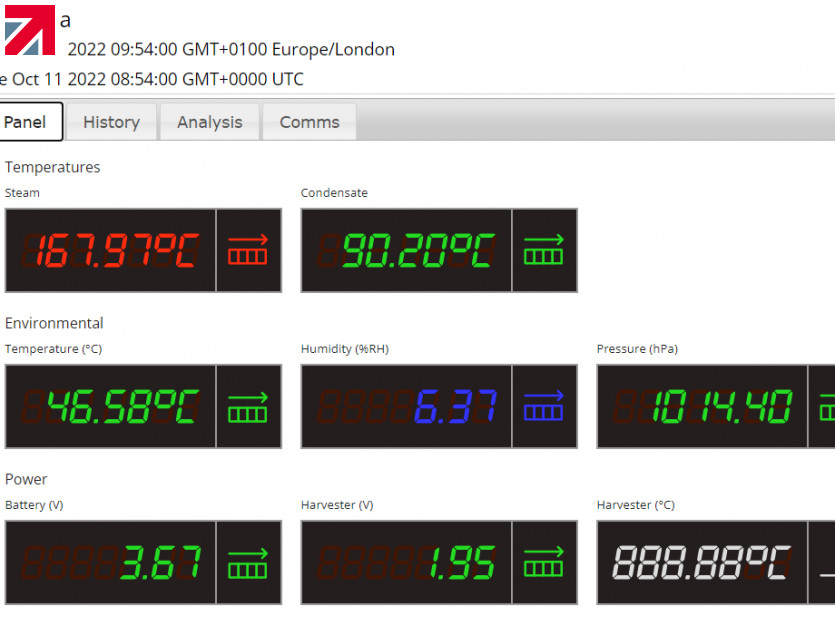This past year, headlines and statistics reported on the skills shortages within manufacturing in the UK. An article from Express and Star in July stated, ‘Skills shortages in Britain’s manufacturing sector are costing the UK £7 billion in lost economic output’.Furthermore, market insights from Randstad the following week reported, ‘This problem is so widespread that an estimated 10 million manufacturing jobs across the globe remain vacant due to the skills gap.’ As a result, maintenance on machines and equipment within plant processes have been deprioritised. However, simple technology solutions are countering this challenge. DCO Systems explain the impacts of deprioritising machine maintenance and how remote monitoring capabilities can help fill the gaps left by the shortage in the skills force.
Lack of machine maintenance trickles to bottom line
With the shortage in the skills force, engineers and plant managers are meticulous about prioritising tasks and time management. Consequently, this means that many crucial projects relating to machine maintenance, upgrades and improvements get put on the back burner. Recently, DCO Systems noticed a recurring theme when engaging in conversations with plant managers at a trade show. We heard statements like, ‘We know that our steam systems are leaking and that we’re losing massive amounts of money'. And, 'We just don’t have enough people to see how bad the problem is’.
Overall, lack of maintenance on machines and equipment trickles into significantly larger problems which impact the bottom line. This includes inefficiencies within the process and impacts on product quality. Not to mention, downtime if machines malfunction and the costs incurred for quality deficiencies and downtime. Specifically, DCO discovered that the cost of 1 leaking trap is £1,457.75 over 6 months. And as one water treatment specialist stated, 'Bad condensate from a leaking trap can contaminate the quality of water used in production'. For these reasons and more, remote monitoring can make a significant impact and fill this gap.
The eyes and ears of remote monitoring
Remote monitoring provides another set of eyes and ears on your equipment and machines. By using a combination of sensors and software, you gain insight into the functionality of the process whilst critically reducing manual inspection. Notably, the sensors and data collected can viewed on a PC, tablet or smartphone from any location (off-site, another plant, or even from home). Furthermore, your team members can also have access to this data which provides for greater team collaboration based on accurate data. Additionally, engineers benefit from notifications when changes in the system occur and a platform to test and trial changes from.
How remote monitoring is supporting a utility services provider
A specific example of remote monitoring countering a lack of engineering resources is from a leading on-site utility services provider in the UK. As part of their portfolio, they provide steam generation services and energy services. Their extensive sites contain numerous plant facilities and steam distribution systems, with long runs of raised steam lines and many steam traps at 20-25 meters distances. In truth, these conditions not only mean that the system is challenging to manually inspect, but also an inefficient use of any engineer’s time as the team is already very busy.
This company has contacted DCO Systems for a complete, end-to-end remote steam trap monitoring solution. For this system, DCO will be building IP66 rated monitoring devices that will be powered using energy harvesting technology. In turn, this will avoid the complications of fixed power cabling and the burden of endless battery replacements. Furthermore, to optimise support for the engineering team and minimise additional work for the company, DCO’s Gateway system will handle the uplink and the host the data into DCO’s DiscoverRA cloud platform.
The cloud platform allows DCO to represent the physical topology of the site with device hierarchies, peer groups and steam system components. Devices can also be associated with physical locations and marked with asset information (like asset tags). As a result, the energy provider will remotely have eyes and ears on their steam systems 24/7/365. Furthermore, alerts will notify the engineers when maintenance is needed so they can crack on confidently with higher priorities in the meantime.
DCO Systems offer a remote monitoring solution for several types of plant processes and steam systems. This includes steam traps, heat exchangers, actuators, motors & drive systems, air handlers, heat recovery units, valves, and pipework. Powered using energy harvesting technology, these sensors allow your team to measure more performance metrics, include more equipment in your reach and receive refined data updates and alerts more frequently. To get started with DCO’s remote monitoring capabilities, contact us or email us at info@dcosystems.co.uk.
Find out more about DCO Systems Limited on their member profile page here
Member-created content 2 years ago | From members
